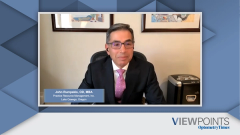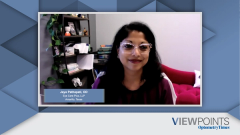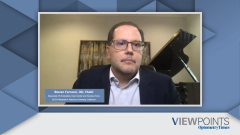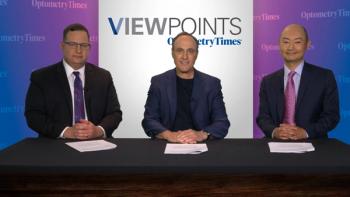
Dry AMD: The Benefits of Remote Monitoring
How data from remote monitoring centers create better opportunities for treating patients with dry age-related macular degeneration.
Episodes in this series

John Rumpakis, OD, MBA: The pace of technology development in these areas of remote monitoring and being able to put the patient front and center with their disease, it allows them to be able to monitor it. You can get real-time feedback on how the patient is doing or adverse changes as the monitoring center is doing things. How does the data from the monitoring center influence your follow-up care and follow-up communication with the patient? Is it affecting how often you’re bringing them back? Does it influence the additional testing that you’re doing when they do come back to the practice? Steve, let’s start with you on that.
Steven Ferrucci, OD, FAAO: When they come in, we’re going to look over their results and see if there have been any changes. Certainly if there is a significant change, the monitoring center will notify the patient as well as the doctor’s office. Obviously, if you get notified there’s a significant change, that patient must come in. At that point, you’re going to assume they have wet macular degeneration until you can prove otherwise. An OCT [optical coherence tomography], OCT angiography if that’s something that you employ, or referral to a retinal specialist for fluorescein OCT if you don’t have those capabilities. Once they convert, then we can rule out wet macular degeneration. Then, if they haven’t converted, it can be as simple as looking over their results for the last 3, 6 months and just saying, “Oh, it looks relatively stable, I don’t notice any significant change, let’s stay the course,” essentially.
John Rumpakis, OD, MBA: Jaya, anything you’d like to add?
Jaya Pathapati, OD: Yes, with the remote monitoring, there are patients who travel quite a bit to come see us. I let them go longer because I feel more comfortable that they are being monitored and they don’t have to make that trip unless it’s necessary. If their vision is fairly decent and they’re not at a super high risk and they have the remote monitoring, I let them go a little bit longer before they have to come in, which has made them happier, fewer doctor visits.
John Rumpakis, OD, MBA: And you’re still maintaining the quality of care that they would expect for a chronic disease that could migrate.
Jaya Pathapati, OD: Yes.
John Rumpakis, OD, MBA: To sum it up, early diagnosis is critical to this disease state, to get them to have the earliest intervention possible. While the traditional model is having them back at 6 months, or 4 months, or 3 months, or annually, whatever it may be based upon the severity of their disease, if a patient can be in a remote monitoring type of a situation, that gives you additional confidence in your diagnosis and your monitoring plan and also allows you the earliest opportunity, or provides the notice almost on auto pilot, if you would, to be able to notify you of any significant change.
Transcript edited for clarity.
Newsletter
Want more insights like this? Subscribe to Optometry Times and get clinical pearls and practice tips delivered straight to your inbox.





